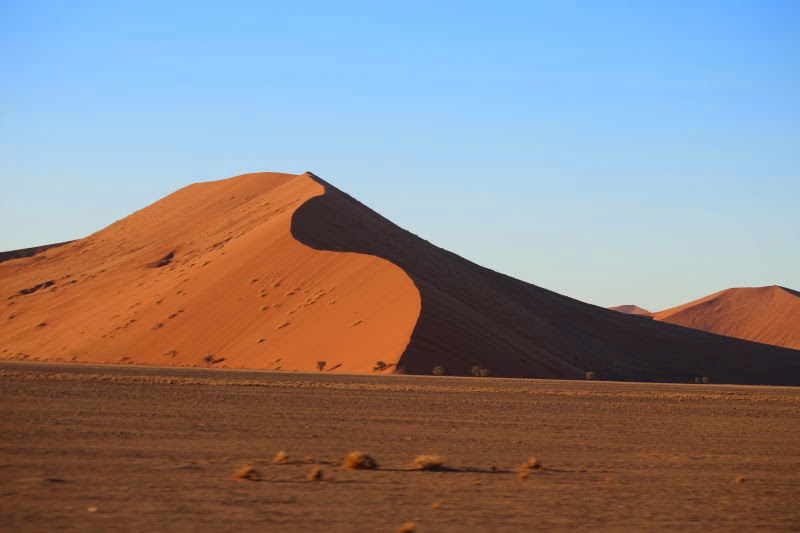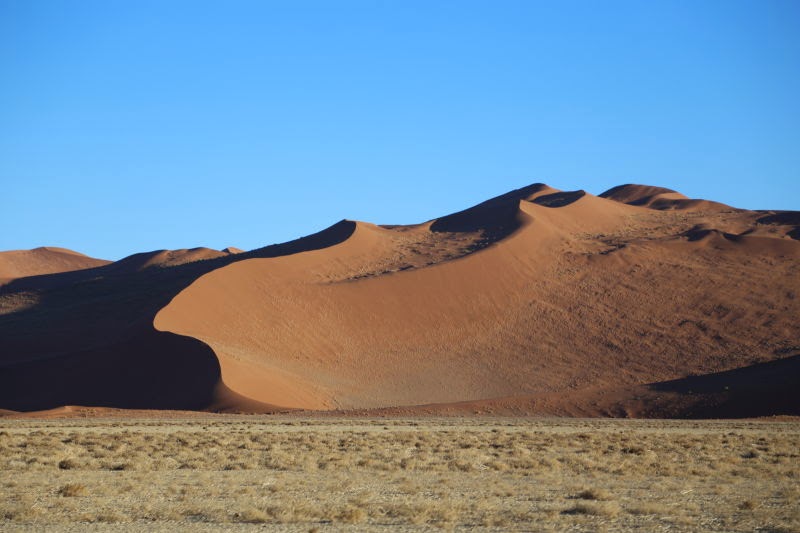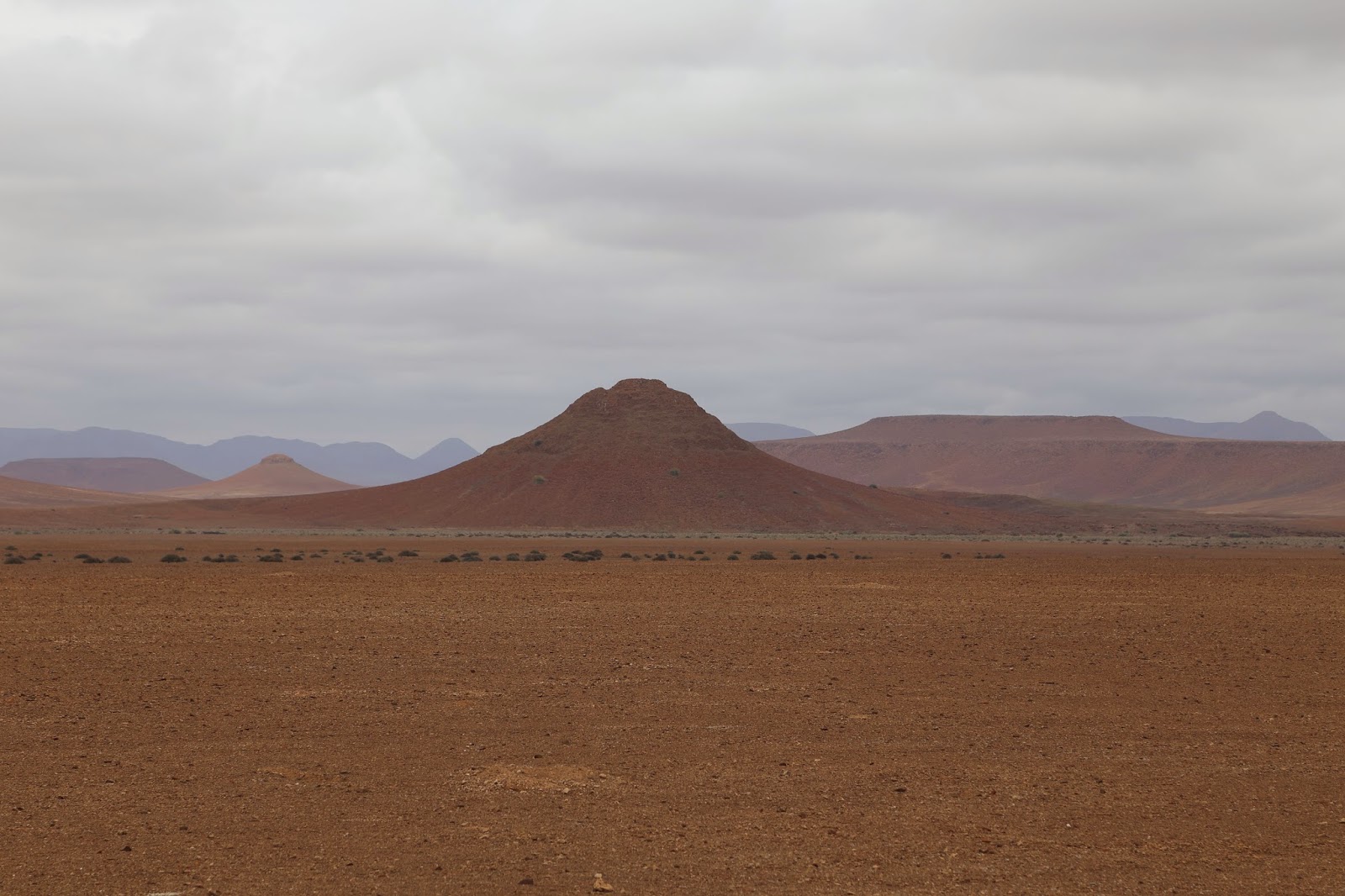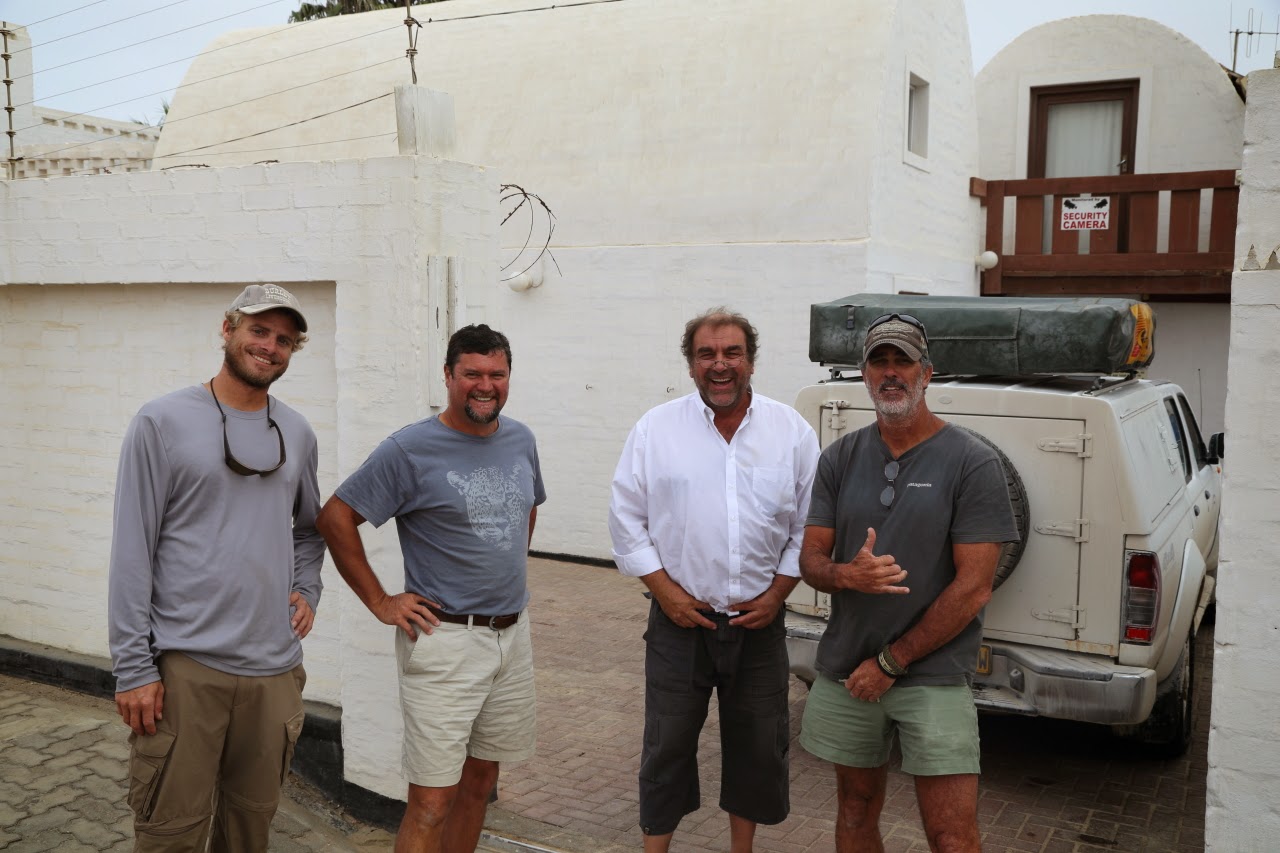Apologies
for the long delay between posts!
 So now let’s pick up where we left off – our day
with the Himba people near Epupa Falls on the border of Namibia and Angola. The next segment of the trip was through the
Namib Desert, a desolate but spectacular place, filled with purple, orange and
brown hues, and a vastness that cannot be captured in photographs.
So now let’s pick up where we left off – our day
with the Himba people near Epupa Falls on the border of Namibia and Angola. The next segment of the trip was through the
Namib Desert, a desolate but spectacular place, filled with purple, orange and
brown hues, and a vastness that cannot be captured in photographs.
We
stopped along the roadside for a cup of delicious tea that Jamie had sent from
San Francisco and to experience the energy of the desert.
There was not a thing growing that we could see
other than the mysterious Welwitschia. Up
close these plants are not much to look at but with close observation reveal a
self-contained ecosystem in a harsh climate that begs for rain which sometimes
does not come for years. Some of the
plants have been estimated to be more than 1,000 years old.
 |
| Welwitschia |
We
entered the Namib Skeleton Coast Park through the back entrance and stopped to
look at a table full of geodes and other assorted desert treasures included a
set of springbok horns which Marius could not let pass. They made the perfect hood ornament!!
 |
| Back entrance to the Skeleton Coast |
 |
| Marius with his new hood ornament |
 |
| Springbok Radar |
 |
| Kalima in the Namib |
 |
| Chris - the Sean Connery look! |
We made
our way to Terrace Bay for a couple of days of Atlantic Ocean fishing. Marius with his fishing pole and Chris and
Kalima with their surfboard which had traveled all the way from Cape Town.
Terrace
Bay was a diamond mine funded by Aristotle Onasis in the 1960’s. They never found anything of substance and it
was abandoned. The Namibian park service
took it over in 1977 and took a gamble that it might become a successful
fishing destination. After more than 30
years it is now a primo spot for the Manly Men fishing trip.
 |
| Remains of the abandoned diamond mine. |
The
place was completely booked and I was one of two females present. However, the second of the female gender was
truly a fisher”MAN”. She was someone not
to mess with and was there with 5 other rotund manly men totally focused on
fish.
Chris
caught a couple of waves in the 55 degree water much to the surprise of the
fishermen observers (unfortunately I didn’t get a photo). Marius caught two
fish, a Kabeljou and a Steenbras, which we fried up fresh from the sea just the
way cousin Tommie Ferreira showed me when we stayed at Cape St. Francis during
the first month of our trip.
 |
| Kabeljpou |
 |
| Fresh fish for lunch! |
At Terrace
Bay the cafeteria provides breakfast and dinner in a large dining room. Over the years visitors have written messages
that cover every inch of wall space. Of
course we had to leave evidence of our presence but all that remained was the
ceiling tiles. So up onto the table I
climbed to leave our unique signature for future visitors to see.
After
our departure we made our way down the Skeleton Coast to Swakopmund. There wasn’t much to see but sand and ocean
but the emptiness of it all was the experience we sought. We passed an abandoned oil-rig that looked
like a Mad Max movie set and found this, appropriately named fishing spot, St.
Nowhere.
 |
| Oil rig resembles a Mad Max movie set |
 |
| A lot of nothingness... |
 |
| How appropriate?? St. Nowhere |
Just
before we arrived at Cape Cross, Marius suggested that I learn how to drive the
Cruiser in the deep sand. Needless to
say I got stuck but he was able to get us out with ease and demonstrated the
process. Chris and Kalima also got very
stuck which I think was the plan in order to try out the super duper winch
system on the Cruiser’s front end. We
had a good time and the equipment worked exactly as it should.
Cape
Cross brings us back to the Portuguese explorer Diago Cao, who was the first to
set foot here in 1486 and erected a cross marker. Cao preceeded Bartolomeu Dias (who passed
Cape Cross and landed at Mossel Bay).
When the Germans took over South West Africa they removed the original
cross, moved it to Germany and replaced it with one of their own. Later someone discovered that the Germans had
placed their own cross in the wrong spot, so an exact replica of the original
was made and positioned correctly. Now
there are two crosses marking the spot that Cao landed.
Cape
Cross is also famous for its large colony of seals. I had never seen so many in one, concentrated
location. I was also impressed with
their mastery of Yoga!
 |
| Hohenzollern House - 1906 |
Swakopmund
is a beautiful German town, very clean with great restaurants and historical
buildings.
We stayed at this great place
called The Alternative Space B&B which we highly recommend:
Disclaimer: "the accommodation at the Alternative Space B&B is NOT RECOMMENDED for those who are miserable, or find pictures of nudity and mixed race relationships, offensive."
www.thealternativespace.com
We also rented quad bikes just outside of
town and went tearing around the dunes for an hour and a half. It was great fun! We learned that Brad Pitt was a frequent
visitor to this same concession and went sand cruising 13 times during one
visit to Swakopmund!



One of
the activities while planning our trip was watching Voetspore – a men’s travel,
cooking and survival show in Afrikaans.
During one of the episodes 4x4 Pizza was featured. Naturally we had to try it and Marius put
Chris in charge of the process. He got
up very early on the day we were to leave Swakopmund to prepare all of the
ingredients and assemble the required materials. The instructions are as follows: take a loaf of unsliced bread, cut in half
and scoop out the insides, fill with choice of pizza toppings, place top half
on bottom half and wrap in foil. Preparation
took place without a hitch and it looked beautifully delicious.
 |
| Step 2 4x4 Pizza |
We
proceeded out of town for Step 2. Put
foil wrapped loaf into a plastic bag and drive over it (very slowly) with front
tire of vehicle. The process and conversation
went something like this:
 |
| Flattening the 4x4 Pizza |
“Chris
don’t you think you need to leave an opening in the bag for the air to get
out?”
“No, it
will be okay.”
Plastic
bag placed under the tire. Drive
forward. Plastic bag explodes with a pop
and the pizza ingredients shoot out the bag covering the tire and the ground.
 |
| OH NOOOO!! |
Susan
and Kalima stand with arms folded observing.
Susan looks at Kalima and says, “Well that was a major - - - up.”
Kalima says, “Hmmmm”. Marius
remains silent.
Chris
jumps out of the car and sees the result.
“Oh NOOOO!” He salvages the
remains and moves on to Step 3 which is to take the foil wrapped loaf (what
remains of it) and place it on the vehicle manifold for heating while driving a
long distance.
The
plan is to have hot pizza upon arrival at destination. Needless to say that although most of the
ingredients were missing the 4x4 Pizza was a tasty success for four hungry
travelers. And, we had a very good laugh
as we headed toward Sossesvlei.































































